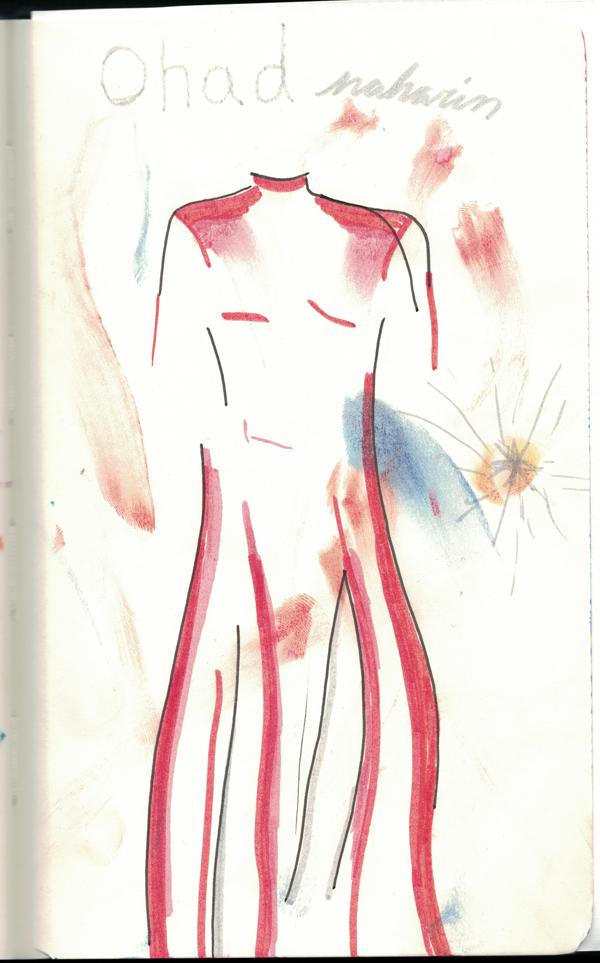I went to my first Gaga class this week. Wonderful.
In early 2018 I learned about Ohad Naharin’s existence through Tomer Heymann’s 2015 documentary Mr. Gaga.
For those who don’t know: Naharin is an Isreali choreographer. He was the Artistic Director of the Batsheva Dance Company from 1990 to 2018 and continues his choreographic work there. He is widely known for Gaga, a movement language he developed while working with dancers at Batsheva. Gaga became the daily training at the company and eventually opened to non-dancers. It is now popular among the general public. Practitioners describe it as an experience of pleasure and freedom.
When I saw Ohad Naharin on screen I was immediately inspired by his grounded power and flowing presence. I was stunned by the availability of his energies. He has that electrifying calm, where total restraint becomes absolute openness. On the Batsheva website Naharin is quoted: “Yielding is constant while we are ready to snap…” I felt struck by lightning when I learned about him. This first impression is recorded in my notebook from January 2018:

I don’t know very much about Gaga and I’ve been told that the practice varies greatly among teachers. However, this week I was struck by unmistakable similarities to exercises and concentration techniques in lesser-known Eastern traditions. It was in many ways like an hour of motley esoteric yoga practice.
In states of expansion, associated with joy and relaxation, the self becomes less contained, less shielded so experience becomes more direct. This phenomenological fact underlies the methods of advanced Buddhist and Hindu practices. It corresponds to what Ohad Naharrin means when he says regarding Gaga, “We become aware of the people in the room and we realize that we are not the center of it all.”
In class, we were instructed to keep our eyes open against the tendency to close them during the experience of pleasurable movement. During pleasurable experiences, we tend to disappear. Gaga cultivates awareness during intensity. One is encouraged to be present with both pleasure and pain. Don’t close your eyes while melting into the pleasure of the body. Focus on the burning in the muscles.
One learns in Gaga to enjoy the burning of the muscles, to connect pleasure with effort. It is an asceticism powered by bliss. A strong vessel is required for the flow of heightened energies. When cultivated, this strength expresses itself as delicateness. Energy cannot flow if there is no channel. A sloppy mind that disintegrates cannot contain this energy. In the present, mind is body. The imaginative exercises, the mental effort, the verbal instructions: this is mind practice intimately mated with the present through grounding in the body. In other words, it is meditation.
One can cultivate this strength in everyday life. When you jump into cold water, stay awake through the shock. When you kiss someone, don’t fall into a syrupy unconsciousness, as if sex were laudanum.
Throughout the centuries, teachers have stated that the original state of the self is bliss and that it is found in the body.
What is pleasure? Beyond the duality of comparison which the term evokes, we have no idea. Pure experience? The sensation of being?
Here’s what the Brazilian writer Clarice Lispector wrote about coming into contact with “it”:
“And there’s a physical bliss to which nothing else compares. The body is transformed into a gift. And you feel that it’s a gift because you experience, right at the source, the suddenly indubitable present of existing miraculously and materially.” (Agua Viva, New Directions 2012, translated by Stefan Tobler)
Gaga is also about letting go of unnecessary tension. What is unnecessary tension? To move without effort means overcoming the dichotomy of activity and passivity. Work is no longer accomplished through willing. Through Gaga we become “available.” What does it mean to be available? For what?
Ohad Naharin talks about being calm and alert all at once. There is plenty of time in the present.
